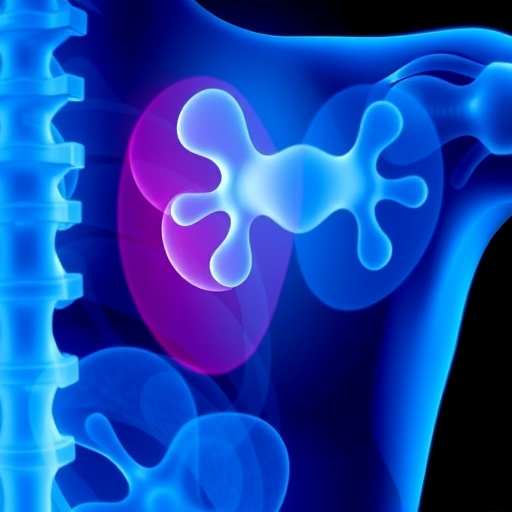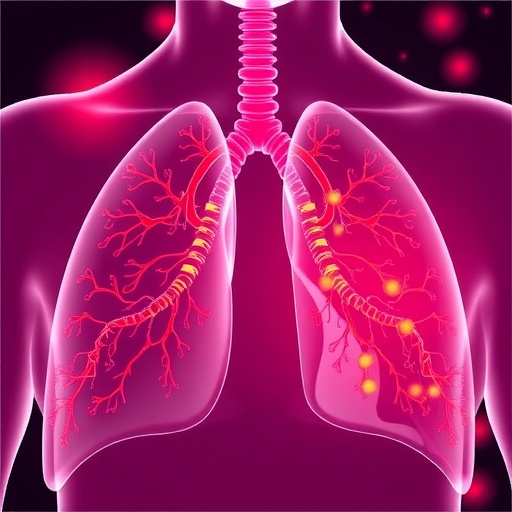In a groundbreaking study that could signal a new dawn for chondrosarcoma treatment, researchers have unveiled compelling evidence supporting the use of a combined therapeutic strategy involving an immunomodulator and chemotherapy. This pioneering proof of concept centers around mifamurtide, an immunomodulatory agent, synergistically paired with standard chemotherapy to combat this notoriously resistant form of bone cancer. The findings represent a remarkable step forward in oncology, potentially reshaping how clinicians approach treatment for patients suffering from this challenging malignancy.
Chondrosarcoma, a malignant tumor arising from cartilaginous tissue, has long posed significant therapeutic challenges due to its intrinsic resistance to conventional chemotherapy and radiation. Unlike more common bone cancers such as osteosarcoma, chondrosarcoma tends to display a heterogeneous cellular environment and slow proliferative behavior, factors that substantially limit the efficacy of standard cytotoxic agents. The need for innovative treatment modalities is acute, especially for high-grade forms of the disease which exhibit aggressive clinical progression and metastatic potential.
The study spearheaded by Quoniou et al. employed an innovative experimental framework combining mifamurtide with chemotherapy agents to potentiate anti-tumor effects. Mifamurtide is a synthetic immunomodulator designed to activate macrophages—key cells of the innate immune system—thereby stimulating a robust inflammatory response capable of targeting malignant cells. By harnessing the body’s own immune machinery alongside chemotherapeutic cytotoxicity, this dual-pronged approach promises to overcome the immunoevasive tactics commonly exploited by chondrosarcoma cells.
In controlled laboratory experiments outlined by the researchers, the co-administration of mifamurtide with established chemotherapy drugs resulted in significant improvements in tumor suppression compared to either treatment alone. The data reflect not only enhanced tumor cell kill rates but also an increased infiltration of activated immune cells into the tumor microenvironment, reinforcing the concept that immune modulation can amplify the therapeutic window of chemotherapy. This synergy could address the critical hurdle of chondrosarcoma’s inherent chemoresistance, potentially translating into prolonged survival and improved quality of life.
Delving into the mechanistic aspects, the study illuminates how mifamurtide facilitates a cascade of immune activation events. Upon administration, mifamurtide binds to pattern recognition receptors on macrophages, notably NOD2 receptors, initiating a signaling cascade that culminates in the production of pro-inflammatory cytokines such as TNF-alpha, interleukin-1 beta, and interleukin-6. These cytokines not only exert direct cytotoxic effects but also recruit additional immune effector cells, including natural killer cells and cytotoxic T lymphocytes, to the tumor site, thereby fostering a hostile environment for cancer cells.
Importantly, the research also highlights the temporal dynamics of the combined therapy. The immunomodulatory effect of mifamurtide appears to potentiate chemotherapy efficacy when administered in close sequence, suggesting that timing and dosing strategies are crucial to maximize therapeutic benefit. The investigators underscore that optimizing treatment schedules to align macrophage activation with peak chemotherapeutic activity could yield the most potent anti-tumor responses, an insight poised to guide future clinical trial designs.
Beyond laboratory insights, the conceptual leap of integrating immune activation with chemotherapy challenges long-standing paradigms in oncology, positioning immunomodulation as a cornerstone rather than a supplementary tool in combating solid tumors like chondrosarcoma. This paradigm shift reflects a broader movement in cancer research where the tumor microenvironment and host immunity are increasingly recognized as critical determinants of treatment outcomes.
While the therapeutic promise is clear, the authors carefully acknowledge the necessity for rigorous clinical validation of the combined approach. Translating these preclinical findings into human patients with chondrosarcoma entails navigating complexities of immune tolerance, potential adverse effects, and interpatient variability. Nonetheless, the study lays a robust scientific foundation for initiating early-phase clinical trials, marking a hopeful horizon for patients facing this difficult diagnosis.
Moreover, the implications of this strategy extend beyond chondrosarcoma. The principle of augmenting cytotoxic chemotherapy with targeted immune system activation could be adapted to other malignancies characterized by immunosuppressive microenvironments and chemoresistance. As the oncology community continues to unravel the intricacies of tumor-immune interactions, therapies like mifamurtide may become integral components of multi-modality treatment regimens aimed at durable disease control.
In conclusion, Quoniou and colleagues’ research offers a compelling proof of concept that combining an immunomodulator with chemotherapy yields superior outcomes in chondrosarcoma treatment models. Their work elucidates critical immunological mechanisms underpinning this synergy and paves the way for innovative clinical interventions. As this therapeutic approach advances towards clinical application, it embodies the transformative potential of immuno-oncology to convert previously intractable cancers into manageable conditions.
This study’s transformative approach, rooted in an intricate understanding of tumor biology and immunology, exemplifies the next generation of cancer therapeutics. As researchers and clinicians worldwide grapple with the challenge of resistant cancers, such combined strategies herald a future wherein boosting the body’s own immune defenses complements and enhances the cytotoxic power of chemotherapy. This fusion of modalities not only offers hope for chondrosarcoma patients but also invigorates the broader quest to defeat cancer through intelligent, multifaceted treatment designs.
The synergy observed between mifamurtide and chemotherapy also underscores the necessity of revisiting and revising existing treatment protocols. Historically, immunotherapy and chemotherapy have been viewed as distinct or even antagonistic approaches; however, this study exemplifies how their thoughtful combination can unlock new therapeutic potentials. This evolving understanding encourages the oncology field to adopt more integrative treatment philosophies that leverage molecular and cellular biology insights for optimized patient care.
As this research progresses, interdisciplinary collaboration will be paramount. Immunologists, oncologists, pharmacologists, and clinical trialists must converge to refine dosing, assess safety profiles, and identify biomarkers predictive of response. The integration of such knowledge promises to accelerate the translation from lab bench to bedside, ensuring that patients with chondrosarcoma receive the full benefits of these scientific advancements without undue delay.
Ultimately, the study not only enriches our scientific comprehension of chondrosarcoma and immunotherapy interplay but also ignites a beacon of optimism. It signals that with innovative strategies and relentless pursuit of mechanistic insights, even the most resilient cancers may one day succumb to finely tuned, combined treatment regimens grounded in immune activation and chemotherapeutic precision.
Subject of Research: Combination therapy involving an immunomodulator (mifamurtide) and chemotherapy in the treatment of chondrosarcoma.
Article Title: The benefits of combining an immunomodulator with a chemotherapy agent in chondrosarcoma–a proof of concept with mifamurtide.
Article References:
Quoniou, R., Bortoli, E., Moreau, E. et al. The benefits of combining an immunomodulator with a chemotherapy agent in chondrosarcoma–a proof of concept with mifamurtide. Med Oncol 42, 476 (2025). https://doi.org/10.1007/s12032-025-03038-z
Image Credits: AI Generated
Tags: chondrosarcoma treatment advancesclinical implications for chondrosarcoma patientsimmunomodulatory agents in oncologyinnovative therapies for bone cancermacrophage activation in cancer therapymifamurtide and chemotherapy combinationnew approaches to cancer treatmentnovel strategies for malignant tumorsovercoming chondrosarcoma resistanceresearch breakthroughs in oncologysynergistic effects of immunotherapy and chemotherapytargeted treatments for high-grade tumors





